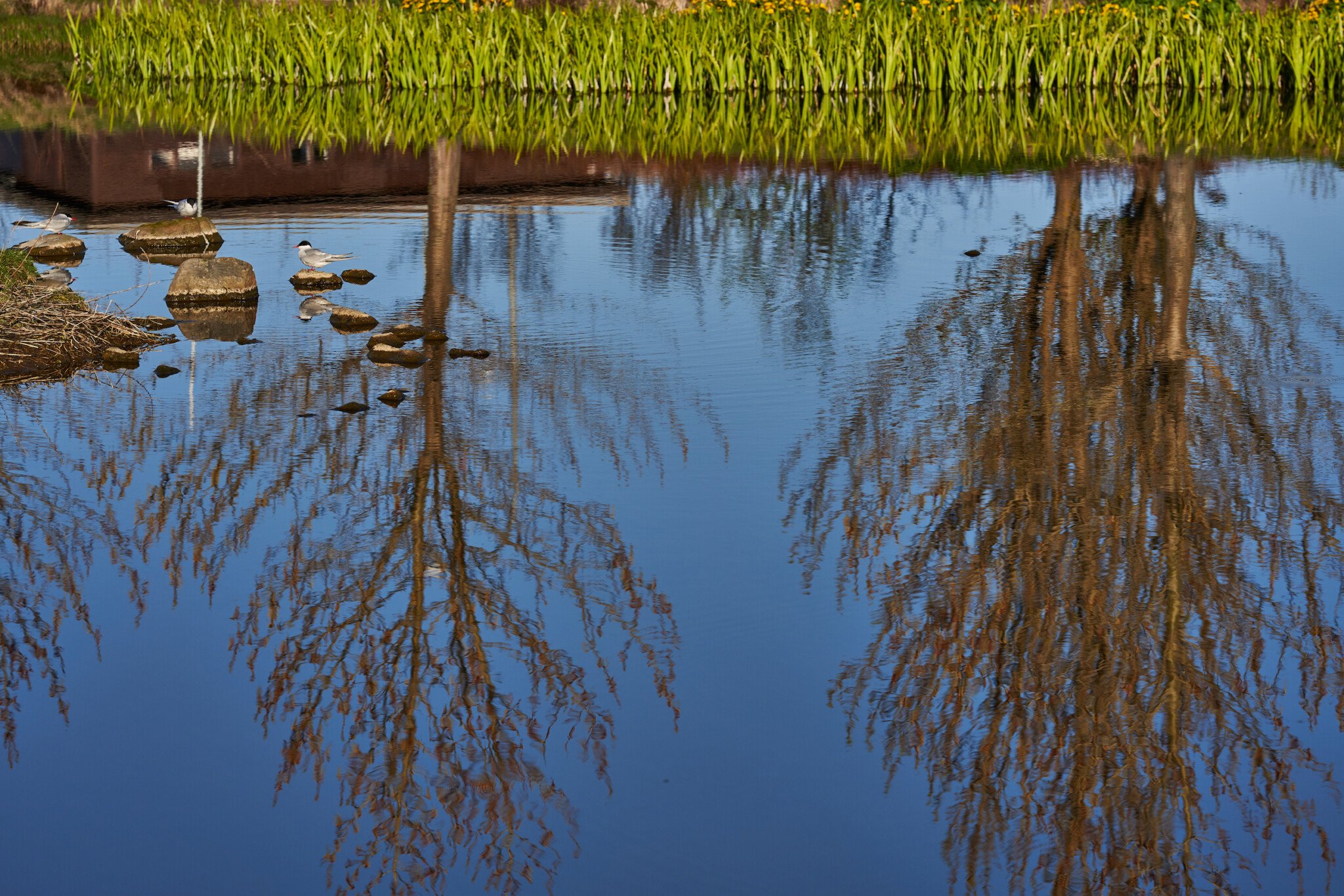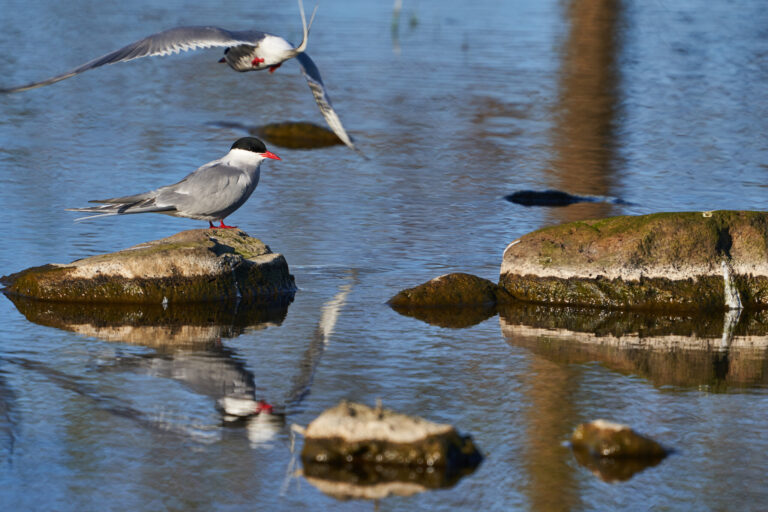A few years ago, changes were made to the islet in Þorfinnstjörn in Hljómskálagarðurinn Park, so it was more suitable for nesting by Reykjavíkurtjörn. Vegetation was removed, mainly angelica, which made nesting difficult. The Arctic tern is very desirable for all bird life by the Pond because it scares away scavenging birds such as gulls, ravens and birds of prey. But in addition to the Arctic tern, several species of ducks nest in the islet. The Arctic tern stock in Iceland, which is the only tern species to nest in this country, is about 200 thousand pairs, about 40% of the population. Sand herring in the sea and horned herring in lakes are the main food of the Arctic tern. Additionally, it catches insects, small crustaceans and brush worms.
No animal travels as far between their summer and winter dwellings as the Arctic tern. In winter, it stays in the sea around Antarctica. But its nesting grounds are around the Arctic, up north Greenland and Svalbard. That’s a trip up to 70,900 km / 44,100 mi long.


Reykjavík 10/05/2022 06:51 -07:52 : A7R IV – A7R III : FE 1.8/20mm G – FE 1.8/135mm GM – FE 200-600 G




